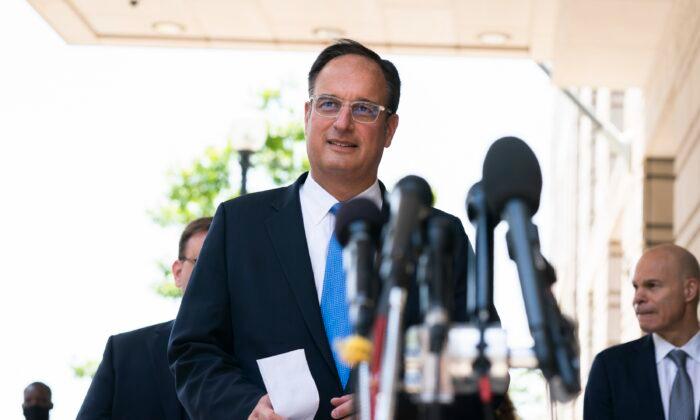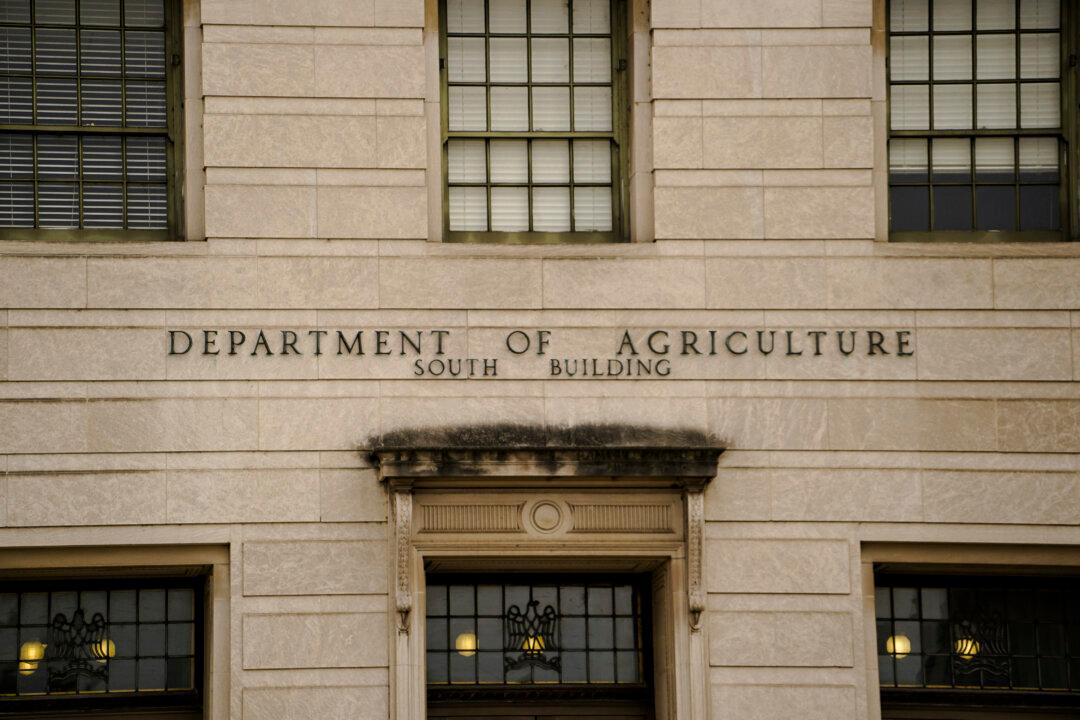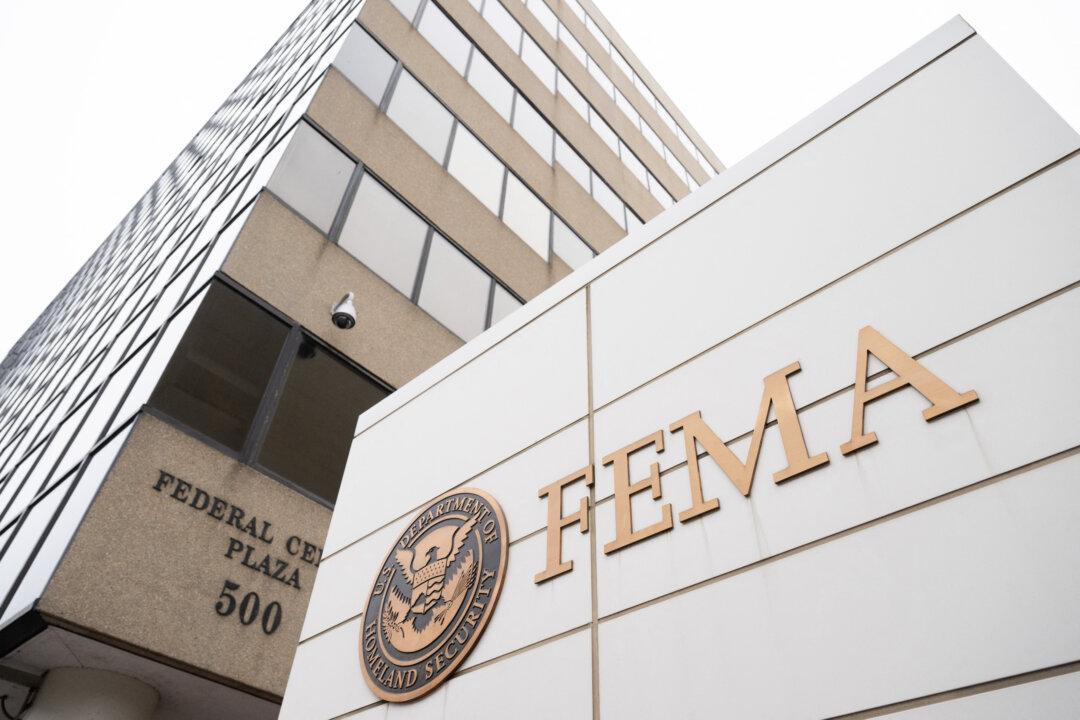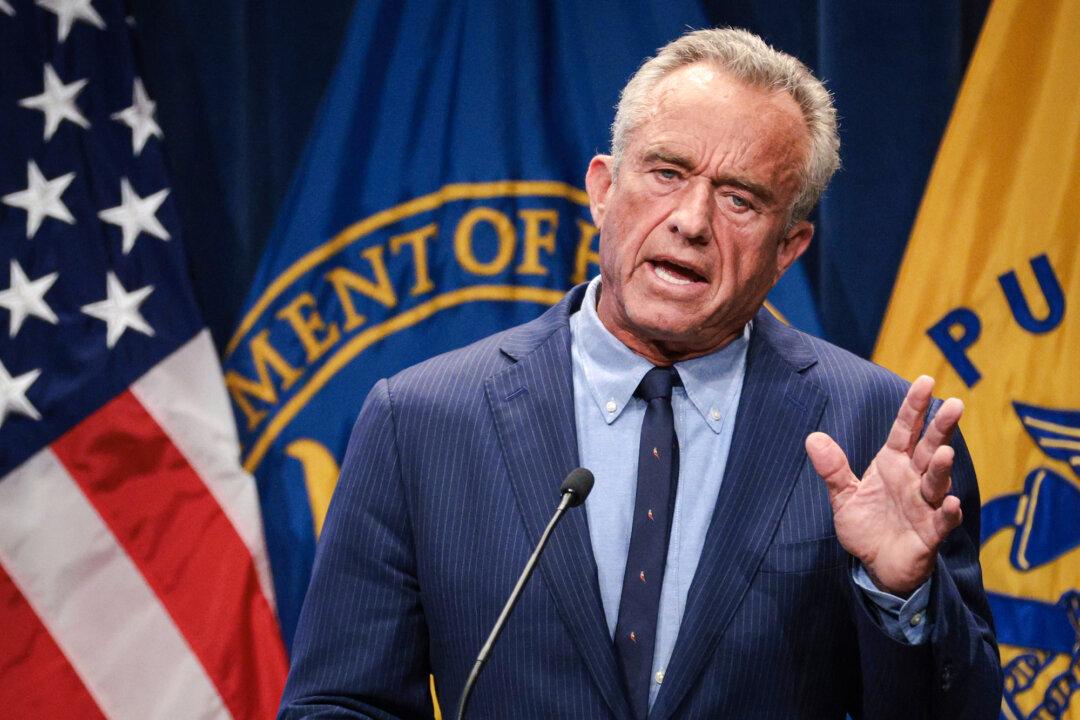1. FBI Lawyer Sussmann Met With Baker, Sought Perkins Coie Job
Sussmann passed along claims about Clinton presidential rival Donald Trump to FBI lawyer James Baker on Sept. 19, 2016, as well as data that supposedly supported the claims.Baker gave the information to others in the bureau, triggering an investigation. The FBI and CIA both determined the claims were unsupported.
Baker, while testifying during the trial, described Sussmann as a friend whom he met when both worked for the Department of Justice (DOJ), the FBI’s parent agency. Baker, who left the bureau in May 2018, revealed that he was seeking to work for Perkins Coie, the firm that employed Sussmann, soon after.
“To the best of my recollection, I think it was Michael’s idea,” Baker said. “I mean, Michael knew that I had left the bureau, and I was looking around for a job—I had a job at the time, so I was working—I was working at the time, but I was looking around at other jobs, including [at] law firms. And so somehow he became aware of that and inquired about whether I would be interested in working at Perkins Coie.”
While Sussmann arranged interviews for Baker, Perkins Coie never made a job offer.
2. Joffe Was an FBI Source, and Was Fired
The information that Sussmann took to the FBI was obtained by Rodney Joffe, among others. Joffe was a technology executive at Neustar who was one of Sussmann’s clients.Joffe was a confidential human source (CHS) for the bureau for years, it was revealed during the trial. He had regularly helped the bureau on cybersecurity matters and was even recommended for an FBI award in 2013.
But Joffe was terminated, apparently because of his actions in 2016. He was “closed for cause as a source,” prosecutor Deborah Brittain Shaw said.
“Our understanding is that Mr. Joffe was terminated as a source for cause in 2021 as an outgrowth of this investigation,” Michael Bosworth, a defense lawyer, added later.
The defense successfully got U.S. District Judge Christopher Cooper, an Obama appointee, to order prosecutors not to reference Joffe’s status again, after they claimed it was “prejudicial to explore or elicit further testimony about his termination, given that it happened so late and was connected to this case.”
Bosworth called Joffe “one of the world’s leading cyber experts” during opening arguments.
3. ‘Tea Leaves’ Was April Lorenzen
The group that gathered the data that Sussmann presented to the FBI also included April Lorenzen, a data analyst at a firm called ZETAlytics.It was known that a person in the group went online and posted some of the information under the moniker “Tea Leaves.” The posts were made in October 2016, shortly after Sussmann met with Baker.
But the identity of the person wasn’t confirmed until the trial, during which Bosworth said it was Lorenzen.
Bosworth was questioning FBI agent Ryan Gaynor, who monitored the investigation into the Trump–Russia claims from Washington on behalf of FBI leadership.
Gaynor acknowledged that, as far as he knew, nobody had tried to contact the person who posted the information online pseudonymously.
“And are you aware that, if they had done so, they would have discovered that the person posting was another cyber expert named April Lorenzen?” Bosworth asked.
“I am not,” Gaynor said.
Slate magazine, which was one of the first outlets to publish an article about the Trump–Alfa Bank claims, described “Tea Leaves” as a male, as did The Intercept.
“Tea Leaves” was mentioned in Sussmann’s indictment, which also described the person “Originator-1.” According to the indictment, “Tea Leaves” was a business associate of “Tech Executive-1,” who has long been known as Joffe.

4. Multi-Pronged Effort to Seed Allegations
Lorenzen posted the data on a WordPress blog. One or more members of the group also reportedly took to Reddit to share the data, and Joffe directed Sussmann to go to the FBI with the claims, Sussmann indicated in previous testimony before Congress.Separately, Joffe approached an FBI agent named Tom Grasso with several IP addresses that were purportedly linked to Alfa Bank, the Russian bank that Joffe’s group claimed had a secret backchannel with Trump’s business.
Grasso said on the stand that he'd been working with Joffe for years, even though he wasn’t Joffe’s handler. He also said the situation was “unusual” because “it concerned a matter that I normally did not work on with Mr. Joffe.”
“Most of the stuff I worked on Mr. Joffe with was cyber crime matters, and this was in the area of Russia and foreign influence and counterintelligence and things like that, which is why I quickly passed it off to who I thought were the people working that matter,” Grasso testified.
During closing arguments, prosecutor Andrew DeFilippis said: “This is Mr. Joffe trying to put these politically charged allegations into another part of the FBI in order to create the appearance of two different streams of information. And that makes sense with the broader plan that was at work here. They were trying to hide origins, hide the involvement of clients in order to get the FBI to investigate.”
5. Clinton Lawyers Met Regularly With Fusion
Marc Elias, another lawyer with Perkins Coie, served as the Clinton campaign’s counsel after Clinton won the Democratic primary. He hired Fusion to perform opposition research and to help him with legal services. Fusion is the firm that compiled the infamous anti-Trump dossier with the help of former British spy Christopher Steele.Elias was known to have met multiple times with Fusion co-founders Peter Fritsch and Glenn Simpson ahead of the election. But during the trial, documents entered by the prosecution show the trio convened regularly, and that Debbie Fine, a top lawyer with the campaign, was part of the meetings.
Fine said on the stand that she communicated with Fusion operatives on average several times a week.
Fine didn’t recall daily check-ins. She said that as far as she knew, only she and Elias were aware of Fusion doing research, but she didn’t know why others weren’t aware.
“I operated on the assumption that, like most of the work that I did for clients, it’s on a need-to-know basis, so I just—I didn’t share it, and I wasn’t told not to share it. And I don’t know whether or not Marc Elias shared it with anyone,” she said.
Elias previously told a congressional panel that Fusion was “acting as my agents” and that he met with the operatives on a weekly basis.
6. FBI Leaders Were Excited About Probe
Then-FBI Director James Comey was “fired up” about the Trump–Alfa Bank allegations, according to internal messages entered into evidence.Comey was interested in the case, another agent wrote.
The decision to open an investigation was made by senior officials.
Joseph Pientka, an FBI official, wrote in a message that the Chicago team “must” open a case because Bill Priestap, another official, “says its [sic] not an option—we must do it.”
The case was opened later that day.
FBI leadership kept tabs on the probe, mainly through Gaynor, who volunteered to monitor it from Washington.
Senior FBI leaders imposed a “close hold” on the material, “which meant that the specific information about who had provided the allegation could not be provided to the field,” Gaynor testified during the trial. Leaders were also said to be behind efforts to stonewall agents who asked to interview the source.
“When we said that we were interested in interviewing the—when I say ’the source,' I mean the author of the white paper or the source of the data—I don’t know if that’s different people or not—but wherever it came from,” said Allison Sands, the FBI agent who was in charge of investigating the claims.
But leadership communicated that “we should, at the division level, focus on the technical analysis,” she added.
Headquarters “was not giving us the ability to go interview these people,” Curtis Heide, another agent working the case, recounted. He said he was frustrated.
Agents said that it’s important to know about sources’ political biases, such as Sussmann representing the Democratic National Committee and the Clinton campaign.
Gaynor acknowledged he had been under investigation for violating the hold during an interview with employees of the DOJ inspector general’s office during a 2020 meeting. He said he was “woefully ill prepared” for the meeting. He believes he’s no longer under investigation.
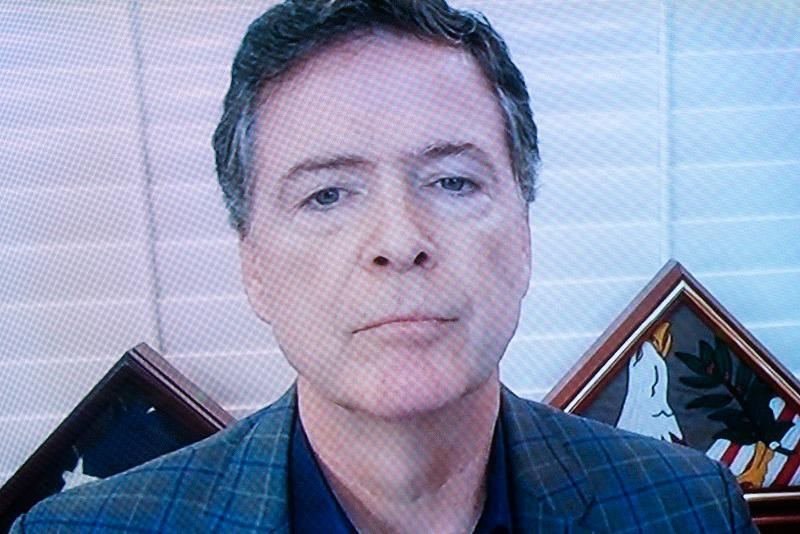
7. Multiple Offices Worked on Investigation
Baker was based in Washington at the FBI’s headquarters. Gaynor monitored the investigation into the claims from Washington. Cyber experts in Chantilly, Virginia, initially analyzed the data, then passed the probe to a hybrid cyber-counterintelligence team in Chicago.At least one agent based in Miami worked on the case, interviewing Central Dynamics, the company to which the Trump email domain was registered, while another agent or agents in Philadelphia handled interviews at Listrak, another company.
Grasso was based in Pittsburgh.
8. FBI Took Months to Close Investigation
A full investigation into the Trump–Russia claims was opened on Sept. 23, 2016. The probe wasn’t officially closed until Jan. 18, 2017.The delay in closing the probe stemmed from not being able to figure out who handed over the thumb drives that contained the data, according to Sands.
The drives were serialized as 1b, which is digital evidence. When the bureau closes cases, it has to return items taken in the course of an investigation to their rightful owner.
“Well, in this case, we didn’t know who the owner of the thumb drives was, because James Baker wasn’t the owner,” Sands said. “He was like a middleman or something. He had given them to us, but we didn’t know who the thumb drives belonged to.”
The team moved to initiate an “abandonment hearing,” which would enable them to destroy the drives. However, because that involved layers of bureaucracy, Sands’s supervisor recommended reserializing the drives as 1a, which refers to anything an agent wants to have in a case file but isn’t necessarily evidence. She cited notes taken in an interview as an example.
9. Paperwork Had ‘Mistakes’
The document memorializing the opening of the investigation said the DOJ referred the allegations to the FBI. So did the closing document.Heide referred to both as “mistakes,” or “typos.” He said the team had apparently conflated the FBI’s office of general counsel with the DOJ.
That wasn’t the only problem with files related to the probe.
The closing document said that the was a “preliminary” inquiry as opposed to a “full” investigation.
“That’s a typo as well,” Heide said.
Heide said he was alerted to the issues for the first time in 2018 by the DOJ’s Office of the Inspector General.
10. Investigation Into Crossfire Hurricane Continues
Special counsel John Durham’s team, which prosecuted Sussmann, is investigating the origins of the government’s counterintelligence probes into alleged Trump and Russia links. Many of the probes utilized information paid for by the Clinton campaign.The FBI is also conducting its own inquiry into the probes, collectively known as Crossfire Hurricane, Heide said on the stand.
“And are you being investigated individually as part of that investigation?” a prosecutor asked.
“Yes. Myself and, I believe, others as well,” Heide said.
Heide is being investigated for “not identifying exculpatory information as it pertained to one of the Crossfire Hurricane investigations,” he added later. “There were various consensual recordings that were obtained from one of the subjects, and there were statements, I believe, used in a FISA application that were—the exculpatory information was not divulged to the FISA court”—the secretive court authorized by the Foreign Intelligence Surveillance Act.
Heide, during testimony, denied that he withheld exculpatory information from the court.
Heide, who is still with the FBI operating out of Des Moines, Iowa, worked on both Crossfire Hurricane and the Mid-Year Exam, or the bureau’s investigation into Clinton’s use while secretary of state of a private email server to send classified emails.
